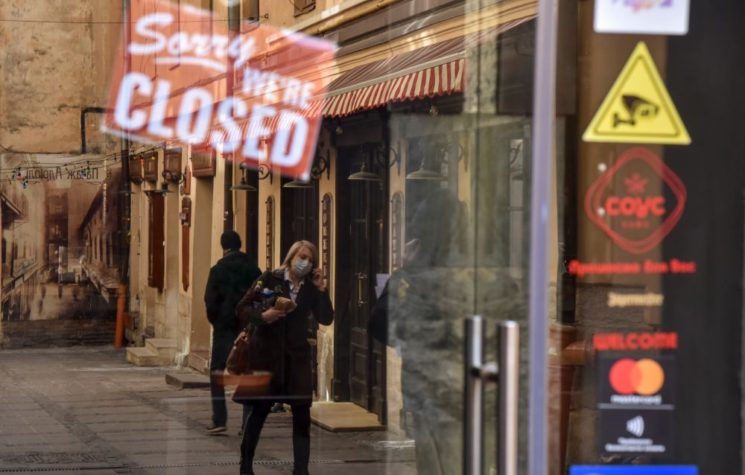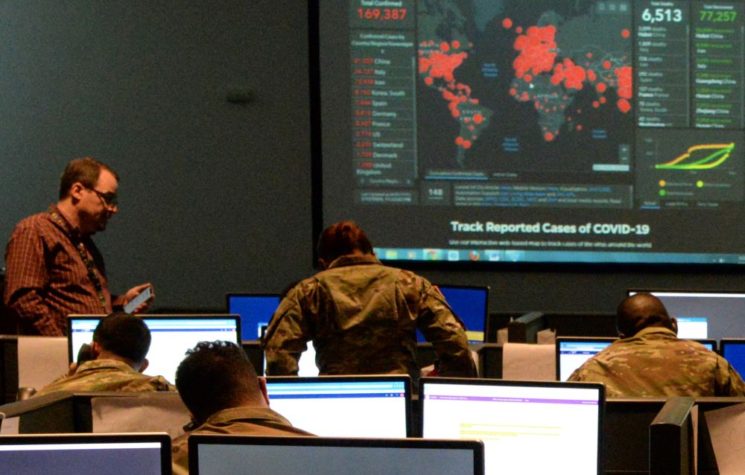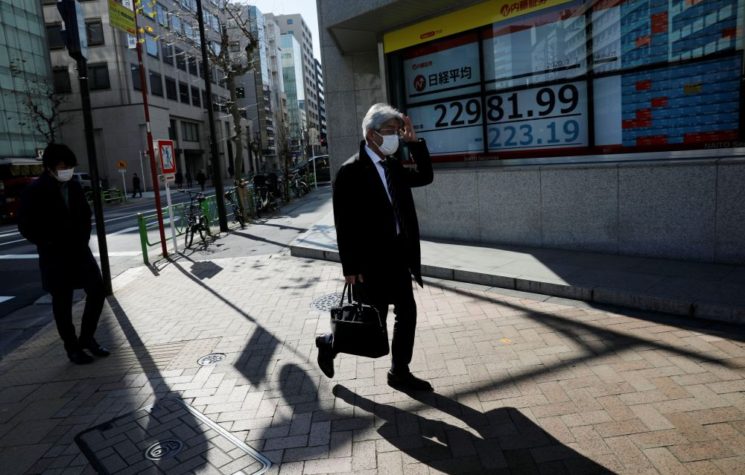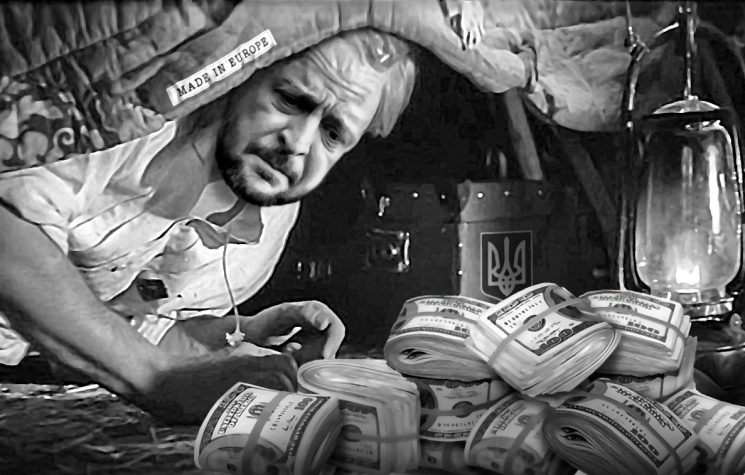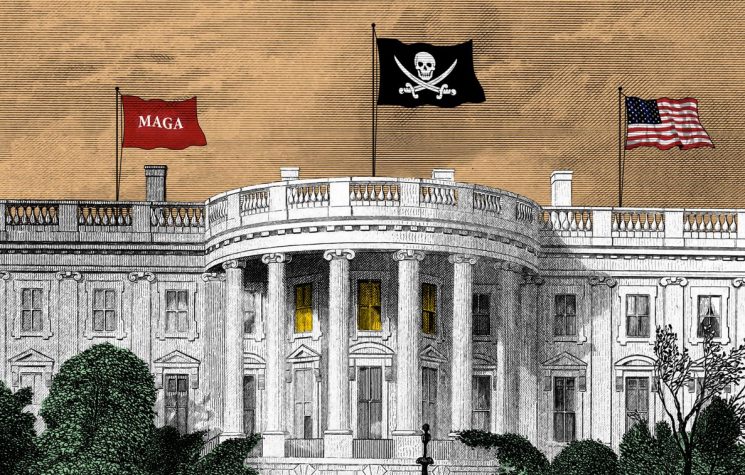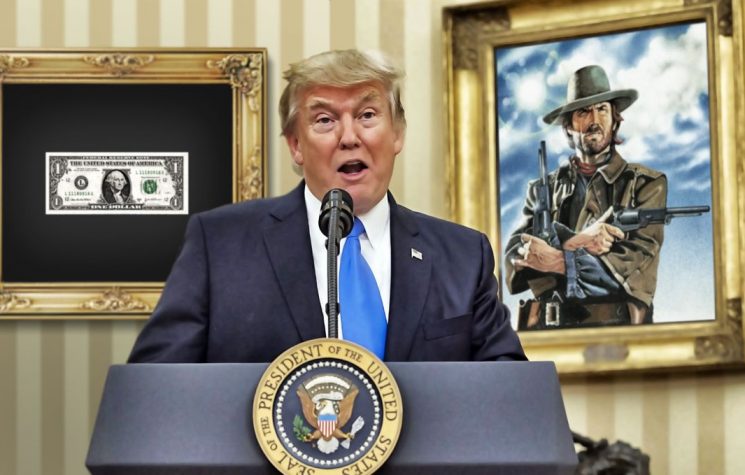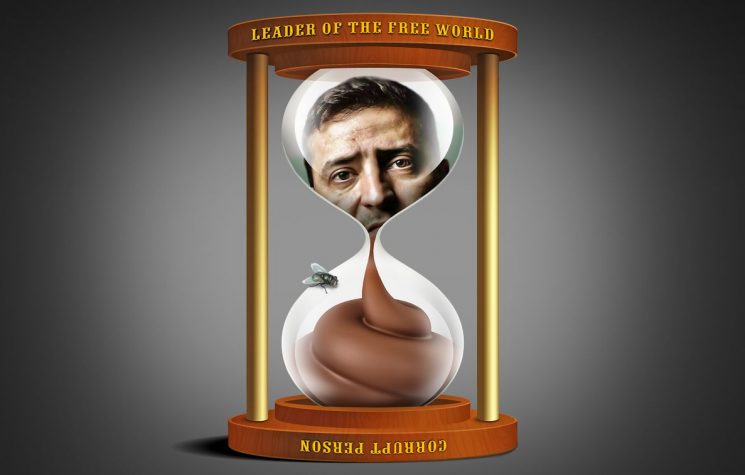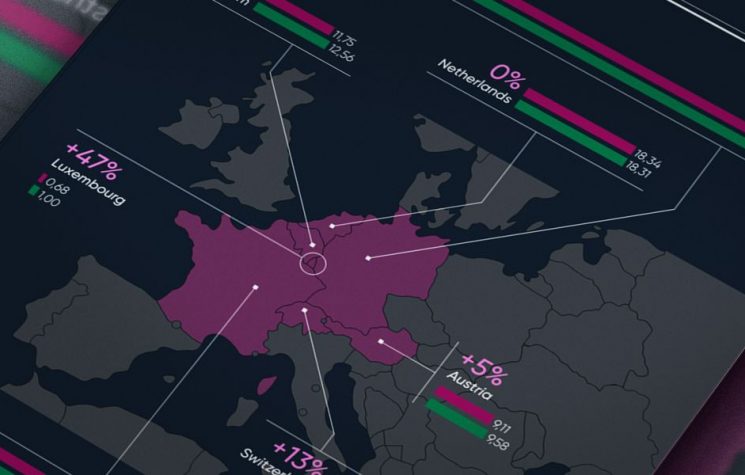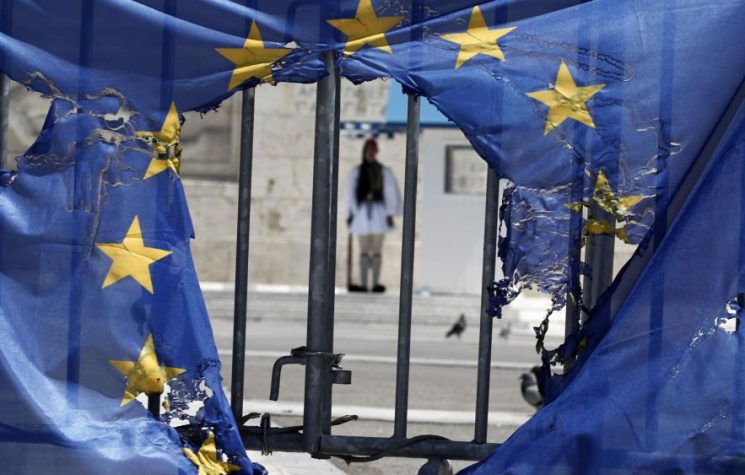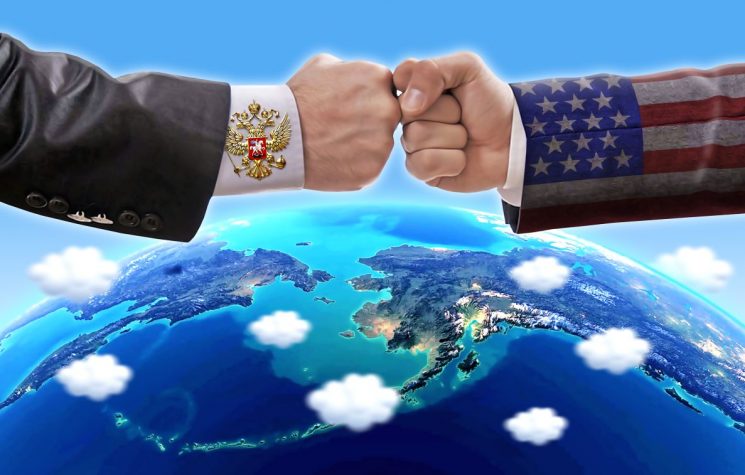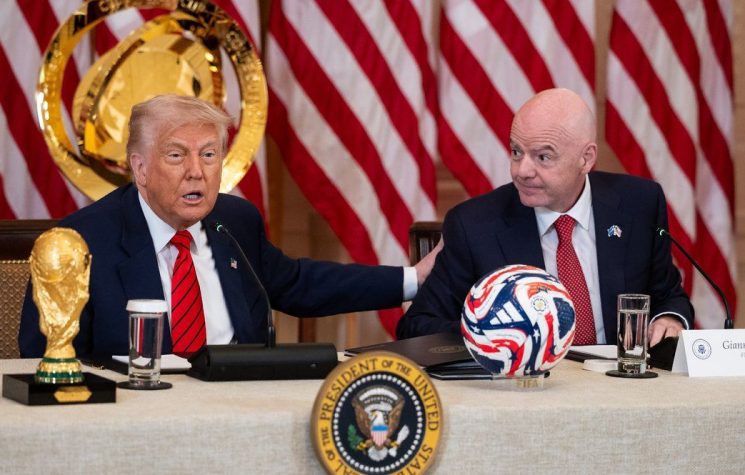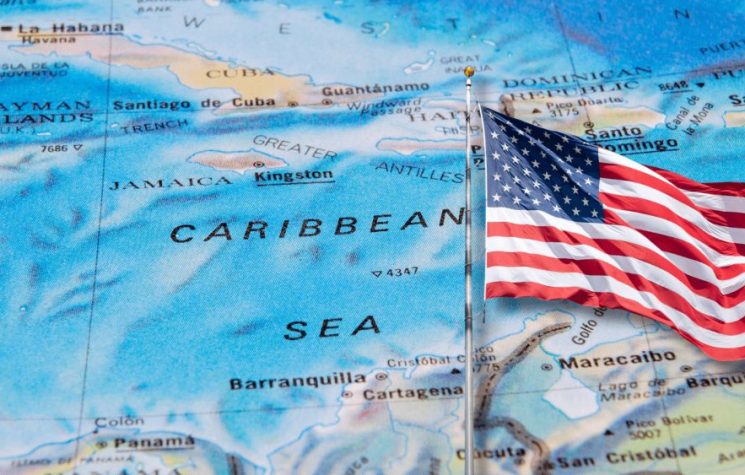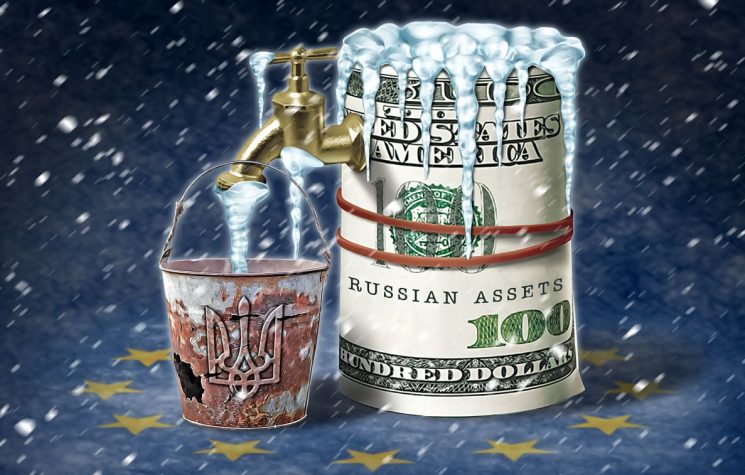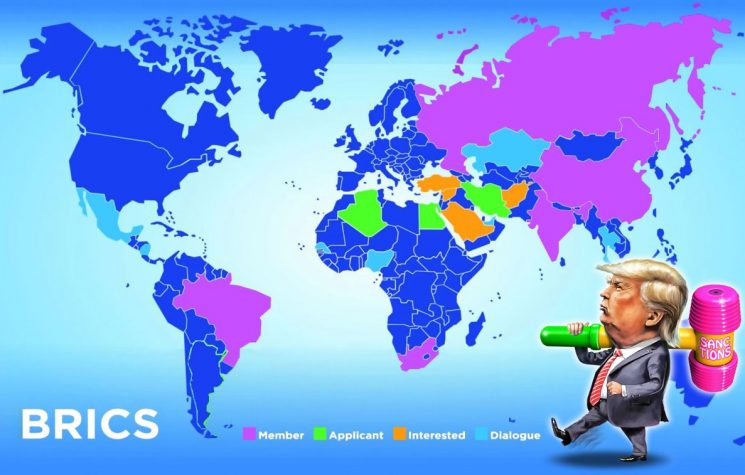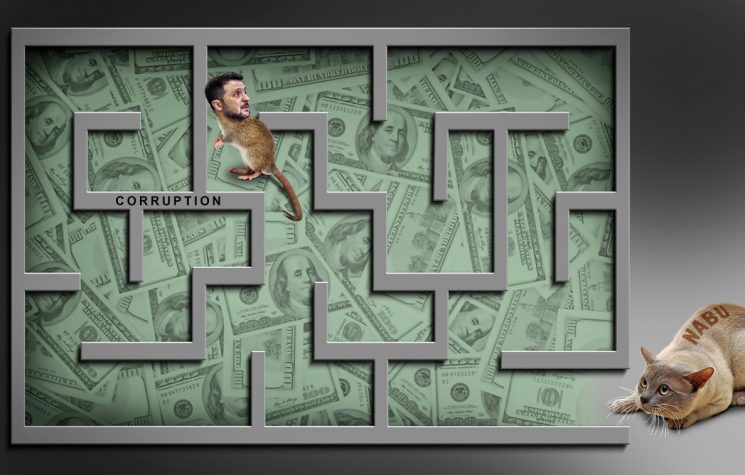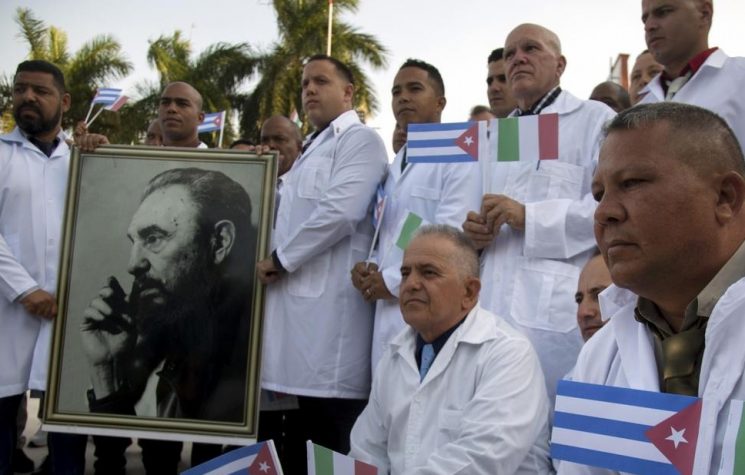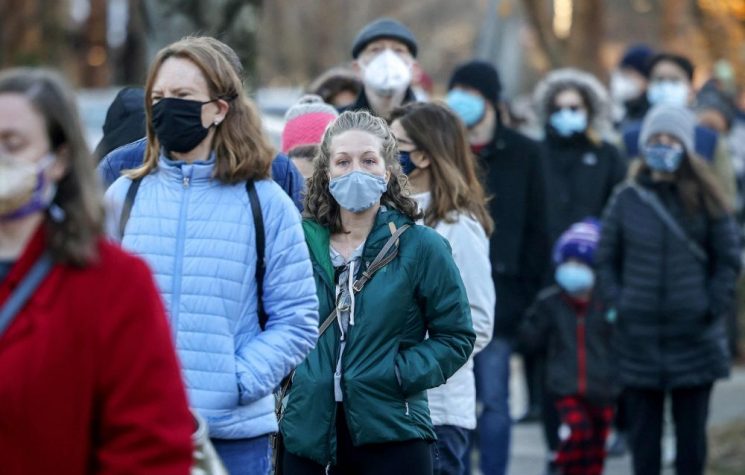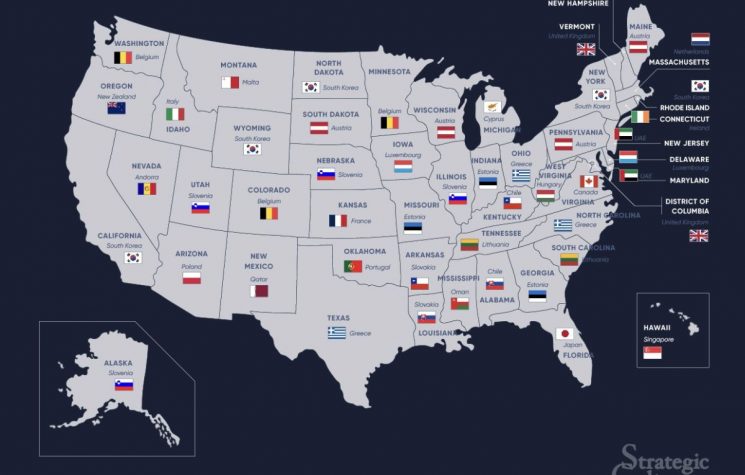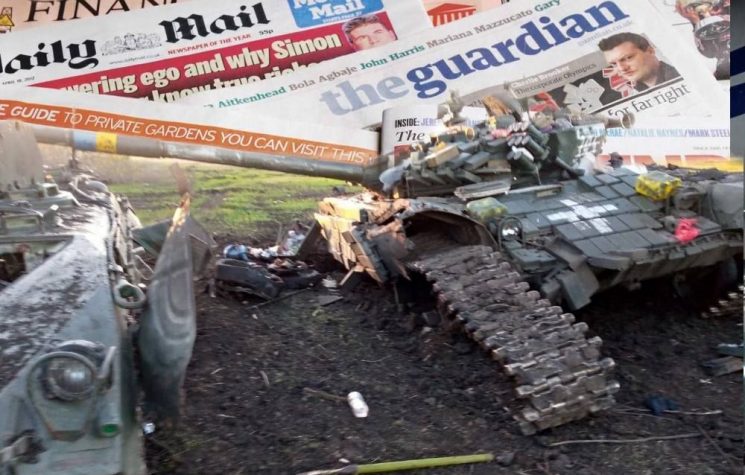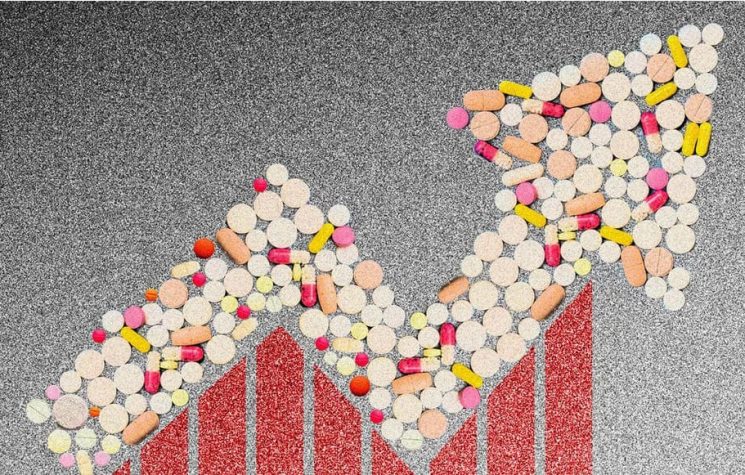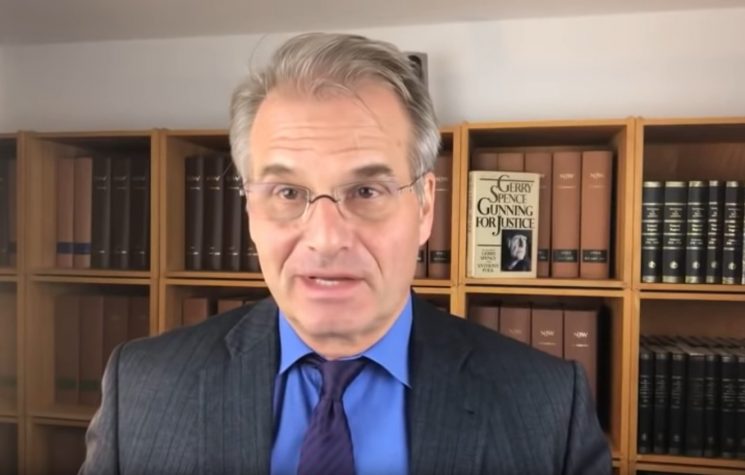The intrusion of some wholly extraneous event – like a pandemic – into any given status quo doesn’t necessarily break it, in and of itself. But it exposes cruelly the shortcomings and workings of the existing status quo. It shows them, as not just stark naked, but also with its dark backstage of barely legal, dole-outs to business, and Wall Street friends, suddenly spotlighted.
Fyodor Dostoevsky sets out in The Brothers Karamazov an allegory that can be applied to our times, but was set in Seville, in the most terrible time of the Inquisition, when fires were lighted every day to the glory of God (rather than today’s ‘glory to Mammon’), and in that splendid auto da fé, when wicked ‘heretics’ were burnt alive. It was published in 1880.
Into this city an entirely extraneous (shall we say non-human) event occurs, that deeply unsettles society: Citizens are suddenly snatched-up from their humdrum daily slog to see the status quo afresh – but now with eyes wide open.
The Grand Inquisitor of Seville is outraged. This extraneous occurrence risks spoiling his carefully contrived status quo:
“Oh, we shall persuade them [the citizenry of Seville] that they will only become free when they renounce their freedom to us, and submit to us. And shall we be right, or shall we be lying? They will be convinced that we are right … Receiving bread from us, they will see clearly that we take the bread made by their hands from them – [only] to give it back to them … In truth they will be more thankful for taking it from our hands – than for the bread itself! Too well, will they know the value of complete submission! We shall show them that they are weak, that they are only pitiful children, but that childlike happiness is the sweetest of all.
“We will indulge them their sins; allow them to occupy themselves with their vices. We will monitor everything, regulate everything, order and legislate for everything – and be their conscience too – so that they do not have to trouble themselves to think, overly; or, to be obliged to make decisions. They exist only to serve us, the élite who rule over them: The millions, numerous as the sands of the sea, who are weak, must exist only for the élite, who rule over them. In this mystery, says the Grand Inquisitor, “lies the great secret of the world”.
Well, here we are: We have an extraneous event: Covid-19. It is different, of course. The Inquisitor literally burnt-out the threat (alive), to the existing order in Seville. Similarly, our ‘Elect’ of today, are equally agog to preserve the status quo. And for reasons very similar to those of the Inquisitor.
Today’s élites face, however, a much more complex paradigm: We are speaking here more of the consequences of Covid-19 on collective human psychology, rather than about the efficacy of any actions taken, or not taken, by the Fed, or G7 Central Banks. The threat in Seville, fundamentally, was about psychological transformation: The Seville ‘event’ induced citizens to question meaning in their lives – and to doubt human agency (and élite ‘agency’, in particular). It didn’t end well in Russia – or for the Inquisitors, ultimately.
The issue for governments – at bottom – is how to resurrect an economy that has been placed into hibernation. Western leaders are fearful that if it is not awakened – and quickly – there may be permanent damage to the infrastructure of the real economy – and consequently, a series of defaults leading to a possible financial crisis, or implosion (i.e. curtains for the status quo). So, we hear a lot now about the cure being worse than the disease, i.e. a locked-down economy can be more harmful than letting people die of Covid-19.
But the paradox here is that élites have no agency. This is not the War on Terror. There is no one to blame (though the U.S. would like to pin Covid-19 on China): ‘We didn’t start it’. ‘Death’ came to us – an event from ‘the beyond’. Combatting it has been declared ‘a full war’ nonetheless. There is nothing tangible, no real enemy ‘to fight’ – just a shape-shifting virus, that virologists tell us is not ‘alive’, but represents organisms that lie at the very edge of life. Such entities cannot literally be ‘killed’.
And how to fight this war? Where is the battle plan? There is none. There can be none (beyond mitigating the reach of death). Dr John Ioannidis, Professor of Medicine and Epidemiology at Stanford University, tells us that the modelling on which government plans for its ‘military’ campaign wholly depend is worthless:
“The data collected so far on how many people are infected and how the epidemic is evolving are utterly unreliable. Given the limited testing to date, some deaths and probably the vast majority of infections due to SARS-CoV-2 (COVID-19) are being missed. We don’t know if we are failing to capture infections by a factor of three or 300. Three months after the outbreak emerged, most countries, including the U.S., lack the ability to test a large number of people and no countries have reliable data on the prevalence of the virus in a representative random sample of the general population …”.
Mortality rates, too, are similarly all over the place: As researchers debate what’s causing Italy’s 10%+ mortality rate, one thing is indisputable: mortality rates are climbing. Virtually every nation that has a large number of reported cases has continued to see mortality rates climb. In Spain, the mortality rate now stands at 8.7%. Ten days ago, it stood at 5.4%. In the Netherlands, the mortality rate stands at 8.3%. Ten days ago, it stood at 3.8%. In the United Kingdom, the mortality rate stands at 7.1%. Ten days ago, it stood at 4.6%. In France, the mortality rate stands at 6.7. Ten days ago, it stood at 3.9%.
Death, in other words, it seems, may be getting the upper hand in this ‘war’.
And yet, behind the governmental fear for the financial and economic status quolies another ‘demon’: mass hysteria and revolt, by those who, now unemployed, haven’t the money to buy food. Again this – the psychology of a rioting mob – is a figment of collective psyche. It can’t literally by killed by soldiers. This psyche is already beginning in the south of Italy where people, who say they are hungry and have no money, are storming supermarkets, and looting food. (It is only food, for now, but soon, it will be raiding for money).
Social disorder and riot is likely to spook governments even more than the deflating balloon of their economies. But isn’t this what the ‘War on Death’ paradigm is about? Police on the streets; the army patrolling; martial law; and the criminalisation of unauthorised movement: It is mounted in readiness for the prospect of popular revolt: against the fear that the Paris – mainly immigrant – banlieues, or the Italian Mezzogiorno, will explode.
The Federation of Red Cross and Red Crescent Societies recently warned that a “social bomb could explode at any moment” over Western cities. That is because the evolution of the pandemic, which has crashed the American economy into a depression, could result in social unravelling in major metros, specifically in low-income areas.
A governmental desperation – stemming from the risks of social and economic disintegration – is likely to push governments to gamble on either an early-ish lifting of social-distancing, or a partial lifting. But the same dilemma applies: governments will be doing this ‘blind’, or on the basis of empirically flawed modelling.
And a gamble it is. The Signier Laboratory gives us this illustration of the possible maths behind ‘distancing’:
This, like most current models, is guess-work in terms of the underlying assumptions (such as a rate of infection of 2.5). But its’ message is clear. Going for partial opening or localised opening will invite some sort of Phase Two. China already is experiencing this – and has had to lockdown Jin Province, after it had just opened Hubei.
Where then does the balance of advantage lie for desperate leaderships? Who knows? A phase II may arrive anyway; the virus might mutate (as happened in August 1918, with Spanish ‘flu), and become more (or less) lethal. What makes Covid-19 infection particularly difficult to manage or predict is that it drops infection from day ‘0’, yet the carrier will not experience any sense of having been infected (or being ill at all) until 5–8 days later. Yet all that time, he or she will be 100% infectious – and potentially spreading a new phase. (There is no general testing for antibodies).
Governments likely will ease distancing anyway to alleviate the social and economic pressures. They will have their fingers crossed that Covid-19 does not return in a new phase to ‘thumb its nose’ – and make a nonsense of all these measures. It is a gamble – and these governments’ credibility will be on the line – whatever they choose. They are becalmed between Scylla and Charybdis: no good options.
So, where does this take us? To a (not unexpected) schizophrenia. On the one hand, there are those – so in thrall (in the J B Yeats sense) to the status quo – that anything other than a rapid re-instatement of ‘normality is beyond their reach. Mental retort sealed shut. As one example:
“One well known set of UK asset managers this morning [yesterday] are blithely predicting a V-Shaped recovery from the third quarter onwards …They think QE Infinity packages have “resolved” the debt bubble, the equity market is now realistically priced for a global recovery, governments have mitigated the damage, and we will see a massive jump in sentiment, activity and repressed demand when the lockdowns end, and economies reopen – with a leap of unfettered joy”.
This line of thinking holds that what is happening in the U.S. and Europe is not a real recession. The economic fundamentals were great. We shut down the economy only because of Covid-19. So, if we were just to start it back up again – everything will be fine.
But, just as heavy doses of refined sugar may impact the human brain in a manner similar to addictive drugs by releasing dopamine, the brain’s “reward” chemical. So too, since 2008/9, we have what Dan Amoss calls, a ‘sugar-rush economy’.
So, the prescription inevitably – to maintain the status quo – is more sugar, more spending and more money printing. And if the effect starts to wane, the reaction is to ‘double the dose’. It is all wishful thinking. It’s a part of the delusion. The economy wasn’t fine. Since 2008, the Fed has fed a sugar-rush economy. It’s a bubble. That’s the problem. And the bubble may have been fatally pricked.
What happens, when finally, we are released from lockdown: We will walk out – still blinking – into the daylight, but it will be a very different world. We will see that human agency – i.e. our governments – were wholly unable to have wrung a scintilla of victory from this war. Recriminations will multiply. If death has retreated – finally it will be because nature, and biology, willed it. There is, of course, human agency – but there are other forces at work in this Cosmos of ours, that can make human Promethean hubris appear pathetic.
It was just such insight that so unsettled Seville, in Dostoevsky’s allegory. The extraneous ‘intrusion’ into their city jerked into consciousness half-forgotten memories of what it is to be fully human, and recalled a different mode of human potential. Intimations of mortality, often do that trick (too), of course.
What follows will be a more hesitant, cautious world. Shocked economically, and at our root we will, I suspect, be much more careful in the future: credit cards will be cut in two; we will try to save more, and we will adapt ‘downwards’. Will we go out and spend liberally? A pent-up ‘jump in sentiment’? No. The experience for all has been chastening. Who now sees the future with any certainty? Every aspect of life is going to be changed. Some of the smaller businesses will open, but many will remain shut. Many of us will continue to work from home. Many of us won’t work at all – and may never work again.
But what seems to be searing the public consciousness is of a different mode: Empathy during the pandemic – there was none. (Recall the comments how Covid-19 striking down Hubei would be good for America). Solidarity – there was none (at least from the EU, to be sure); Leadership – there was none, yet semi-legal corruption – abundant. Trump has taken charge of the U.S. Treasury, which in turn, now fully controls the dollar printing presses of the Fed. Trump is King Dollar. He can print whatever he likes. Give it to whomsoever he wants (via the Treasury’s secretive Special Purpose Vehicles (SPVs)), outsourced to Blackrock Fund. The U.S. Budget now is toast.
As one banker noted: “Would you want to be a Democratic candidate running against [a Trump] spending USD2 trillion on infrastructure in a weak economy? Good luck with that!” Eyes wide open: Where is our moral compass – as well as our common humanity?
The mask is off: Is this the point of inflection for the global order, when the western hyper-financialised system is unable to reform itself, refuses to reform itself – and yet is unable to sustain itself, as it once was? Will the system – so busily engaged in looking after itself – even notice that the world doesn’t believe in it anymore, not even one jot?










